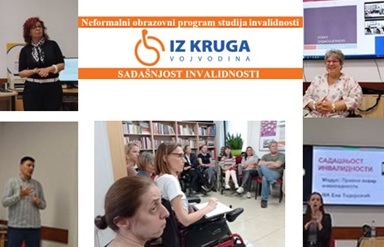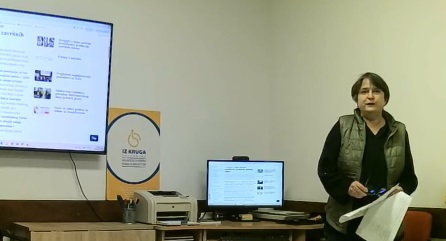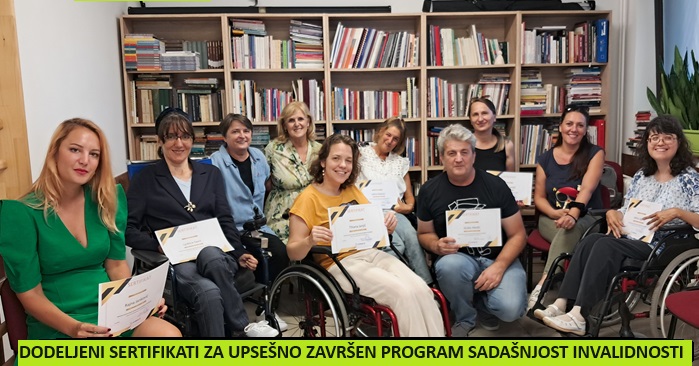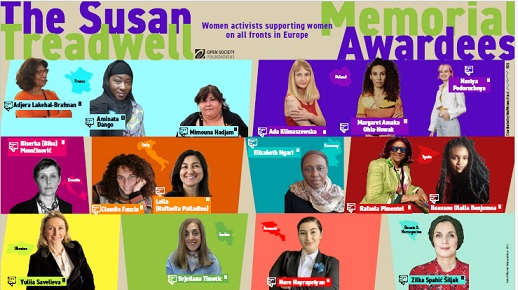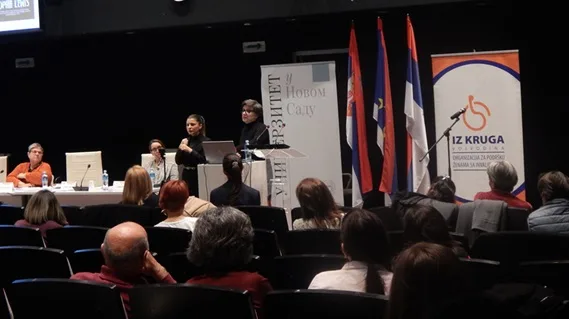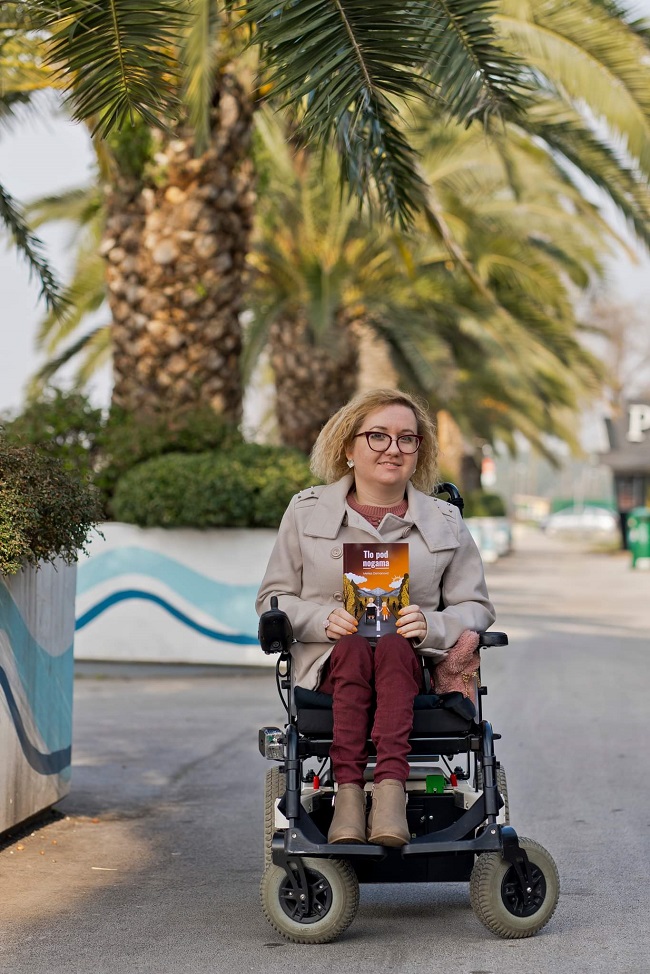
Melisa Osmanovic (1992) from Pula has been practicing sports for a long time, and she achieved remarkable success in bocce ball for people with disabilities. She was declared a sportsperson of the year for persons with disabilities in the city of Pula three times in a row and six times in a row the best bocce ball player of persons with disabilities in Croatia. Melissa is an economist by profession who likes to read psychological novels, drive, listen to music, cook, and travel in her free time. She is active in the Muscular Dystrophy Association of Istra. She recently published her first novel, The Ground Beneath My Feet, which is the reason to talk to her about her writer’s urges, putting her experience in an autobiographical text, and her attitude towards wheelchairs, sports, and life.
When did the writing urge appear? What things did you write before the first novel?
– It is my first literary work ever: I haven’t written anything up to now. This novel has been brewing in me for years, primarily to illuminate the world of disability better. I attended a few friend’s book promotions, of persons with disabilities and realized it was possible; a desire and need to write emerged. I didn’t want to write long love stories or poetry. I was adamant it should be autobiographical.
You say that the idea of a book existed for years and that you made a definite decision to write it in 2020. How did you become aware that the idea was ripe? Was there a watershed moment that showed the time was right? High time?
– Maybe the novel could have originated earlier, but I was always waiting for one more thing to accomplish, to experience something else which would be in a book. I came to my senses at one point and decided that I didn’t want to wait anymore. I opted I had enough material, experience, will, and enough things I lived through and survived to be put in writing. And that if I read too long, the book would not appear, nor would it be written by itself. I think one decision that I carried out to the end was sufficient. And great courage. The one thing I wished was to write the book until my thirtieth birthday.
What are the books you had to read to be able to write this book?
– I would rephrase the question: – What are the things you had to live through in order to write this book? – because this book paints a life with events and things I felt on my skin. Of course, I liked reading from the earliest age. I read most in high school – psychological novels, for example, Paulo Coelho; I looked for answers to my essential questions while the other kids went out and socialized. In other words, the books helped me find some answers, and that’s why I decided to be someone’s answer, actually my novel.
Why an autobiographical novel? Is it literary autobiography or auto-fiction?
– It is an autobiography of 108 pages. I start from the very beginning, from the day I was born until today, about my schooling, facing and excepting my diagnosis-muscular dystrophy, emotional relationships, traveling, cooking, a car, sports, my fears and wishes, and the importance of rehabilitation itself. I addressed the parents of children with disabilities a lot to show them how to behave and what to expect when they get their child’s diagnosis. For those initial, most difficult situations, when they think that their world has collapsed. But it hasn’t, not at all. I evaluated it through my example: it would have been much easier if I had such a book to show me what lies in front of me and what my condition brings. I wanted to write about the questions persons without disabilities have about us but have never asked them out of shame or inconvenience. Overall, to talk about persons with disabilities a bit more in public, not in a bad, woeful, and sorrowful manner but in an informative, favorable, and different tone. The book contains proverbs and private photos from various periods of my life, a song, and a sweet recipe. As a matter of fact, it is an educational and motivating book, and anyone can read it.
How did you come up with the title? What lies behind the words The Ground Beneath My Feet? Is it the key to the entire story?
– When I started writing, I had no title for the book. I didn’t fret about it because I knew the idea would appear in time. Then I came up with four titles and gave myself a few months to decide which was suitable. I didn’t want to pressure myself. I even asked my close friends how they sounded and to vote for one; in the end, I admit I made the decision myself. Yes, The Ground Beneath My Feet wraps up my entire life story, extends through the book, and ends like that. My ground beneath my feet means that I used to walk up to my twelve; I felt how it was to walk and the ground under my feet. I am glad I had the opportunity, even for a short time. I write in a book how much it meant to me. Later I had to sit in a wheelchair due to my disability.
The preface states: This book is all you need regarding motivation for today. For tomorrow. For the rest of your life. Did you consciously want to achieve that, or what is in the preface is one of the possible meanings and interpretations?
– I was aware that the book might be motivational. After all, I wanted it to be. As it happens, it will be as people perceive it, probably everyone in their way; just as every person that met me has an opinion about me, they will have about my book too. I know the real reason for writing it, and that’s enough for me.
How did the writing process unfold? What were the thrills, and what trepidations?
– The writing itself lasted three years. I spent the entire 2022 editing, proofreading, shaping, choosing the design, and finally printing the book. As a matter of fact, when I started the realization of the book, I didn’t know a single person to work with. I started digging and searching the Internet and found a proofreader Nela Baricevic from Zagreb, a lively young woman who steered me in the right direction and helped me find other people who could help me edit the book. Somehow it all took its course at its own pace, and I found other associates. I dreaded writing, particularly since this is an autobiography, writing about oneself. That’s precisely why it wasn’t easy to write, and sometimes I didn’t know how far to go. What are the meaningful things people need to know without faking it, appearing I am fabricating my life; on the other hand, I still wanted to keep certain things for myself and protect my own intimacy and the intimacy of people close to me. In other words, I scraped a layer of my life. The one most important and consequential. At the same time, I didn’t talk much about writing the book and didn’t comment on it; I wanted to have placidity and be surrounded by neutral and objective people. My parents and people close to me knew, of course.
I start the book from the beginning, from birth, childhood, detection and facing the disease, accepting the diagnosis, about my parents, traveling, sport, future, and disability etiquette. Elaborate on disability etiquette.
– I realized that disability etiquette is not present much in public or the media; in other words, very few people know there is such a thing as disability etiquette. It is the reason I wanted to put it in my novel. To teach people how to approach a person with a disability and how to behave in certain situations. First and foremost, when talking to a person with a disability, focus on the person and not on their disability. Maintain eye contact when talking to a person. Use common expressions like – see you, let’s walk, talk to you later. It is significant to use common phrases no matter what kind of disability a person you are talking to has. Don’t be afraid of using the wrong words. Address the person with disabilities directly, not the one accompanying them, as if that person doesn’t exist or understand. It happened to me a few times, mainly in shops, when I was accompanied by an assistant. It is material to react then, to direct and point to the mistake. We are the ones that can and must change things instead of waiting for others to do it or remaining silent.
At times we leave the old and get new wheelchairs. Like in life. Certain things depart in order for the new to appear. You like and accept them as other things on and about you. You ask for them to be adopted. Don’t move ahead from it. Don’t choose. They come with you as a set. Ultimately, a wheelchair is merely a piece of metal; it is much more important who is driving.
…
In the context of relationships with others and my wheelchair, I would like to emphasize that I find it significant that my wheelchair is excepted from the beginning. Of course, this wasn’t always the case, but those relationships would almost always end swiftly. I would simply see that the person doesn’t feel comfortable in public with me, that they find it difficult to aid or pass me something, and that they are not so interested in talking to me. Basically, realize those relationships won’t go on; they are short-lived.
Extracts from the book The Ground Beneath My Feet
You talk about your attitude towards the wheelchair in one part of the book. What kind of relationship is it?
– It is a volcanic and specific relationship. In the beginning, the wheelchair, namely the day I started using it, served as a kind of salvation. Rescue from hard and strenuous lifting. At first, I didn’t exactly know what they were bringing. I learned eventually, and we befriended leisurely. There were periods when I wanted to throw it away, break it, set it on fire, and not see it ever again. I used to ask it for many answers, getting little or nothing in return. Sometimes people left me because of it, or it was a burden to them. Yet, I learned the most important: not to be embarrassed by it. It is my legs; it takes me wherever I want to go and helps me move on a daily basis. It helped me understand who wants to be with me and who doesn’t. It accelerated the process, which is good in a way. We are the ones who decide on the outlook.
Why did you decide to self-publish the book?
– Sincerely, it sped up the process of writing and editing the book. I haven’t even looked for the publisher; to begin with, I didn’t know how it functions, and secondly, I thought it would last longer and that the publishers wouldn’t like my manuscript. I wanted to do everything by myself, according to my norms, and simultaneously save time for publishing expenses I knew would exist.

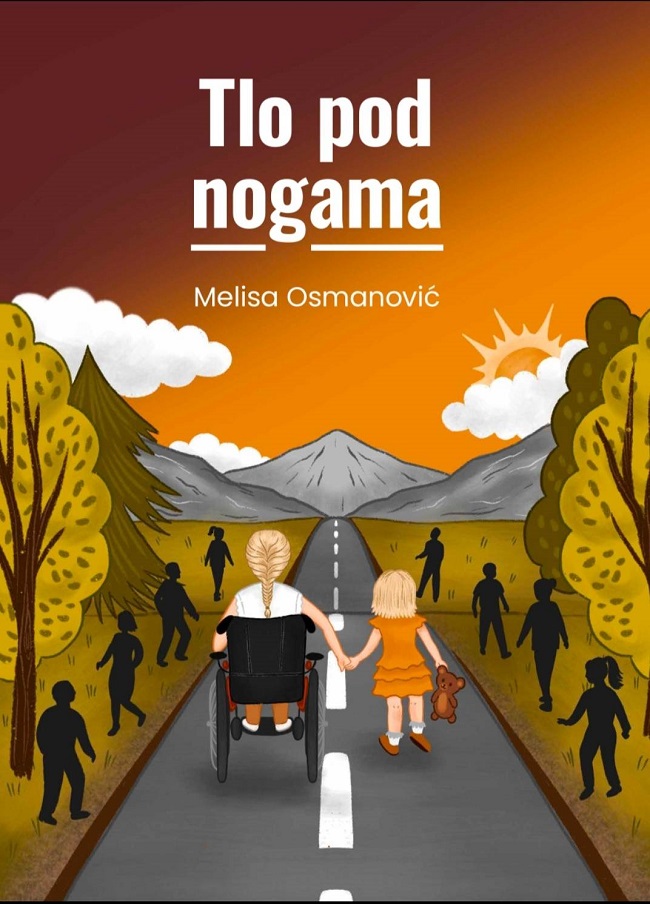
You are active in The Muscular Dystrophy Association of Istra. Briefly present The Association. What are its main activities, and why is it consequential for you to work in The Association?
– The Muscular Dystrophy Association of Istra was the first stop in discovering my diagnosis. They enrolled me in The Association very early, when I was ten. It provided my parents with all the answers that bothered them in the primary phase of the disease. When I was three, we learned that I had a hereditary genetic condition and that my muscle fibers were unusually susceptible to damage. I am the first one in the family with that disability. In the beginning, I was one of the most engaged members of the Association, and a few years back, I became a vice president. The Muscular Dystrophy Association of Istra was founded a long time ago, in 1974, with the aim to amass, take care of, and help persons with muscular dystrophy, i.e. similar neuromuscular disorders. We carry out various programs, projects, and activities like psychosocial, art, and culinary workshops. We go on therapeutic horseback riding, use pools, and swim in the summertime. We have a loan for orthopedic aids. One of the relevant programs we carry out is the personal assistance program, which is of the utmost importance. Two years ago, I became an employee of the Association as a coordinator of the forenamed activities.
You are a multiple champion in bocce ball for persons with disabilities in Croatia and, for three consecutive years, have been proclaimed the best sportswoman with a disability in Pula. How would you explain the concept of bocce ball or the sense of bocce ball to someone from the other planet?
– The sport is exceedingly engaging and alluring. It is an indoor sport and the only Paralympic sport that persons with the most severe disabilities can practice officially and professionally, i.e. ones with a hundred percent injury of arms or legs. The aim of the game is to get as close as possible to the white target ball dubbed jack (boccino). Bocce ball is divided into four categories. It is getting more and more popular in Croatia lately.
Which life aspects benefit from practicing sport, and what does it mean to you to be declared the best?
– In my opinion, sport is vastly valuable for identity-forming and better self-confidence. Sport as such, has the purpose of empowerment, helps maintain physical condition, and is very important for mental health. Being declared the best is definitely, without false modesty, a sublime feeling that feeds you with great courage, positivity, strength, and faith. When you experience the feeling, you want more all the time. It comes with a price: a lot of training hours, time, sacrifice, self-discipline, and mental strength. Being organized is very important for persons with disabilities; sports enabled and taught me that.
What would present you tell a three-year-old you?
– Not to be afraid of anything and to believe in herself. Give herself more opportunities, many things are temporary in life, and we need to enjoy and discern the good times.
The first promotion of the book The Ground Beneath My Feet is scheduled at City Library Pula on Wednesday, February 8, at 4 p.m.
The book can be commissioned from the author personally via e-mail at melisa.osman12@gmail, Facebook, and Instagram. Melisa is dispatching them to addresses around the world.
Translated by: Suzana Belos


